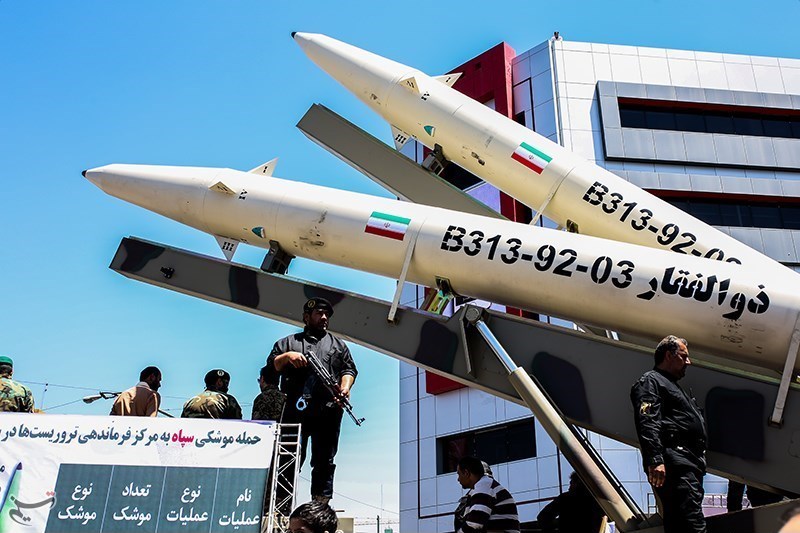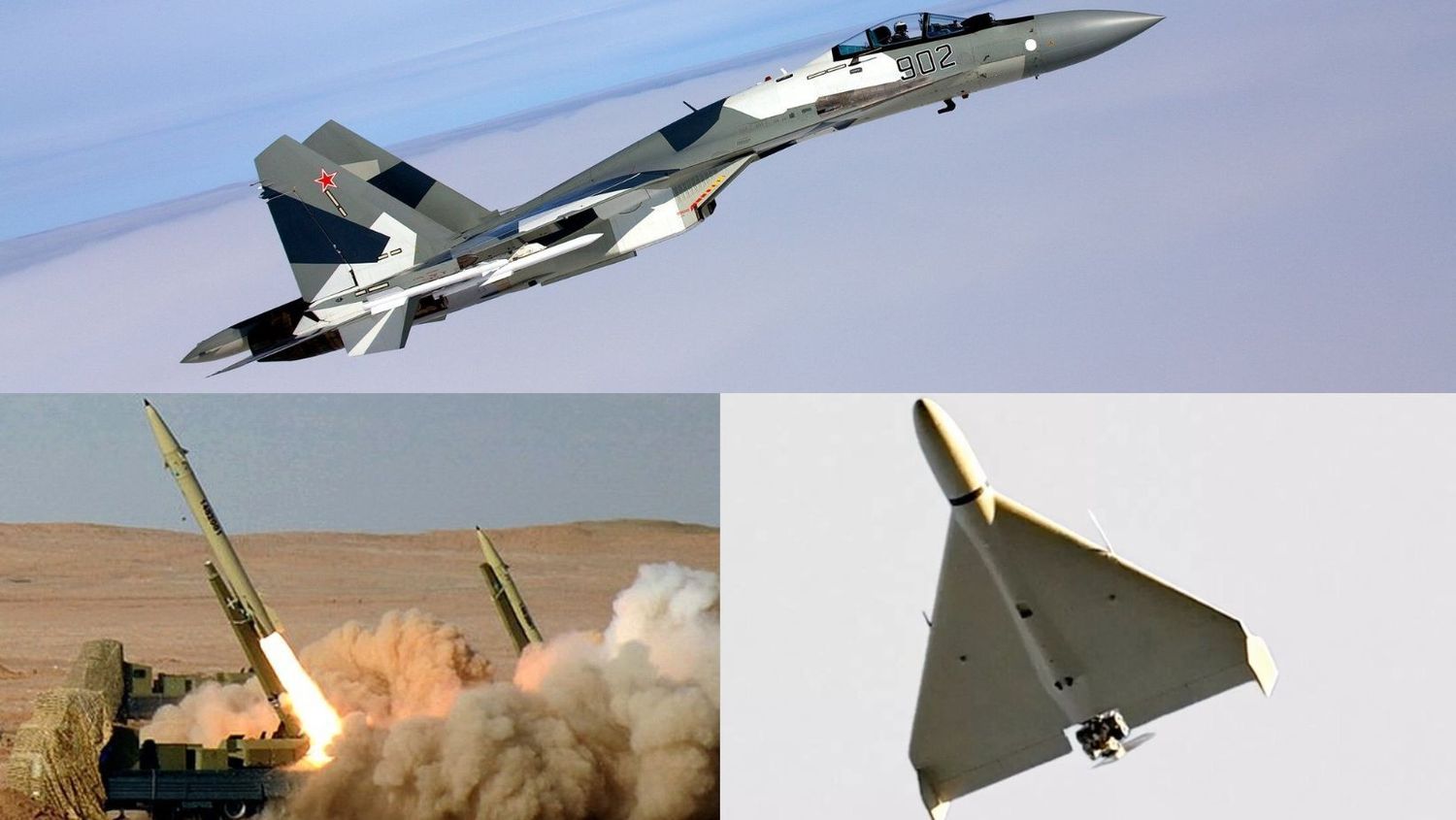Russia and Iran swap Su-35 fighters for drones and ballistic missiles
During the past week, Persian media claimed that Iran will soon receive 24 Su-35 heavy fighters, and that their pilots have been training in Russia for some time. In return, Moscow would receive massive quantities of Iranian drones and ballistic missiles for use in its war against Ukraine.
The information that Iran had turned to Russia to modernize its Armed Forces has been circulating since at least the end of 2021 and the Su-35 was always among the central items of an eventual defense agreement.
The origin of these fighter jets dates to 2018, when Egypt signed the contract for the purchase of 24 Su-35SE for an approximate amount of USD 3 billion. The official confirmation took place only in 2020.
Egypt’s original idea was to acquire the Lockheed Martin F-35 fifth-generation multi-role fighter, but the US authorities made it clear to them that the Lightning II was not available to them. By way of pressure, they went for the best fighter available in the competitive market, the SU-35.
The US countered with threats of economic sanctions under CAATSA (Countering America’s Adversaries Through Sanctions Act – an US law created to retaliate against adversaries through sanctions). Among several possible repercussions, the operability of Egypt’s fleet of more than 200 F-16s, dozens of AH-64 Apache helicopters, and hundreds of M-1 Abrams tanks would be at risk, so Cairo decided to shelve the purchase. Finally, Egypt would buy the French Rafale fighter.
The First Egyptian Su-35 start the flight trials.#Egipt #Russia #Sukhoy #Su35 #Су35 pic.twitter.com/Ls01mVgEq3
— ??? ???? ???????? ???????? (@TheDeadDistrict) July 23, 2020
But it turned out that Egypt had already paid itself a good part of what had been agreed with Moscow, and the Su-35s had been manufactured and painted in the colors chosen by the Egyptian Air Force. The contract was in effect and the money could not be returned. Both parties reached an agreement and Cairo authorized UAC (the construction company) to resell them on his behalf. After a failed attempt to place a dozen of these fighters in Indonesia, everything seems to indicate that Iran will be the final destination of these Su-35SE.
Fighters for drones and missiles, a convenient exchange
The final farewell to the Persian cat?
The Iranian Air Force (IRIAF), although numerically still powerful, was in practice greatly outmatched by the Air Forces of its neighbors, because it operates a varied «vintage» fleet of aircraft of American and Russian origin, from the 1970s and 1980s. Its main air defense fighter is still the F-14 Tomcat which, although it received several life extension works and some updates, was never adequately modernized and no longer represents a credible threat.

And although Iran has very important deposits of good quality crude oil, the many sanctions to which the Ayatollahs’ regime is subjected prevent them from exchanging these resources for the dollars needed to acquire new weapons systems abroad. Not to mention the diplomatic and political aspect. Iran has almost no options when it comes to modernizing its Armed Forces. Only Russia and China seemed willing to offer their assistance, and the significant Russian shortcomings evidenced during the war in Ukraine ended up forging a surprisingly symbiotic relationship between Moscow and Tehran.
The Russian Su-35SEs will represent a giant leap forward for the IRIAF in terms of technology, and will be more than worthy replacements for the Tomcat as Iran’s primary means of air defense.
The Russian industrial bottleneck
The war in Ukraine taught two big lessons to the Russian top commanders. First: drones and unmanned aerial systems (UAS) came to the battlefield to stay, because they are versatile and very effective force multipliers. Second, while Russia has developed a wide variety of modern UAS and drone models, its bottleneck lies in the ability to produce them in the quantities needed to counter the Ukrainian advantage in this area.
The supply to Russia of hundreds of cheap Iranian drones (a situation already announced by the White House in July 2022) is one of the measures taken by Moscow to alleviate this situation of shortage of its own resources.
The most widely used Iranian system against Ukraine is the Shahed-136 loitering munition, which in the Russian Armed Forces received the designation Geran-2. It is a suicide drone designed to be used against ground targets at long distances, with an explosive warhead of between 30 and 40 kg, and a range of up to 2,000kms. The Shahed-136 has been in daily use against Ukrainian critical infrastructure, in conjunction with Russian cruise missiles launched from its bombers.
It is likely that Russia will soon receive thousands more Iranian UAS of various types, not just those mentioned above, as the demand on the battlefront is great.
Another need that seems likely to be filled by Iranian industry is short- and medium-range ballistic missiles. At the beginning of the conflict, one of the most effective means used by the Russians for deep strikes on vital Ukrainian targets were Iskander ballistic missiles. However, their use has not been reported for several weeks now. There is a great silence regarding this weapon system.
A good infographic on the Iranian Fateh Missile family including their length, diameter, mass, warhead mass, range and claimed CEP. Performance of Fateh-313 in attack to Ain Al-Asad base in Iraq was intriguing. pic.twitter.com/eyDqrnYTVc
— Mehdi H. (@mhmiranusa) March 9, 2020
In exchange for Su-35 fighters, Iran can supply a large number and variety of ballistic missiles, which have demonstrated good accuracy in strikes against ISIS/Daesh fighters in Syria and as part of retaliatory strikes against U.S. and Kurdish bases in Iraq.
One example of an Iranian missile that Russia could be getting soon is the Fateh 313. This missile, unveiled to the public in 2015, is built in composite materials and uses a newly designed solid fuel. According to information disclosed by Tehran, the Fateh 313 has a range of 500 km, a maximum speed of mach 4-5, a warhead of 500 kg and high accuracy, with a circle of probable error (CEP) of 3 meters relative to the target.

Other likely candidates are the 700 km range Zolfaghar missile, the 1,000 km range Dezful or the 300 km range Hormoz-2. The danger posed by these missiles is that because of their range, speed and warhead, they can hit hard, and with relative impunity from existing air-defense systems, critical infrastructure and Ukrainian strategic targets. In fact, some versions of these missiles are equipped with an infrared imaging sensor for terminal guidance of their warheads, to attack moving targets such as ships, or with passive radar seeker sensors, to attack enemy air defense systems.
Mutual benefit
The Su-35SE will enable Iranian pilots to become acquainted with 21st century technologies and will provide a credible air defense of Tehran and other areas of strategic importance, such as sites associated with its nuclear program.
For Moscow, the Iranian drones and ballistic missiles would mean an important reinforcement of its ability to pursue the current war of attrition strategy, which should ease the pressure on Russian troops on the front lines while buying time to complete the preparation of new recruits and reorganize its war industry and overall economy toward one of war.


Para comentar, debés estar registradoPor favor, iniciá sesión